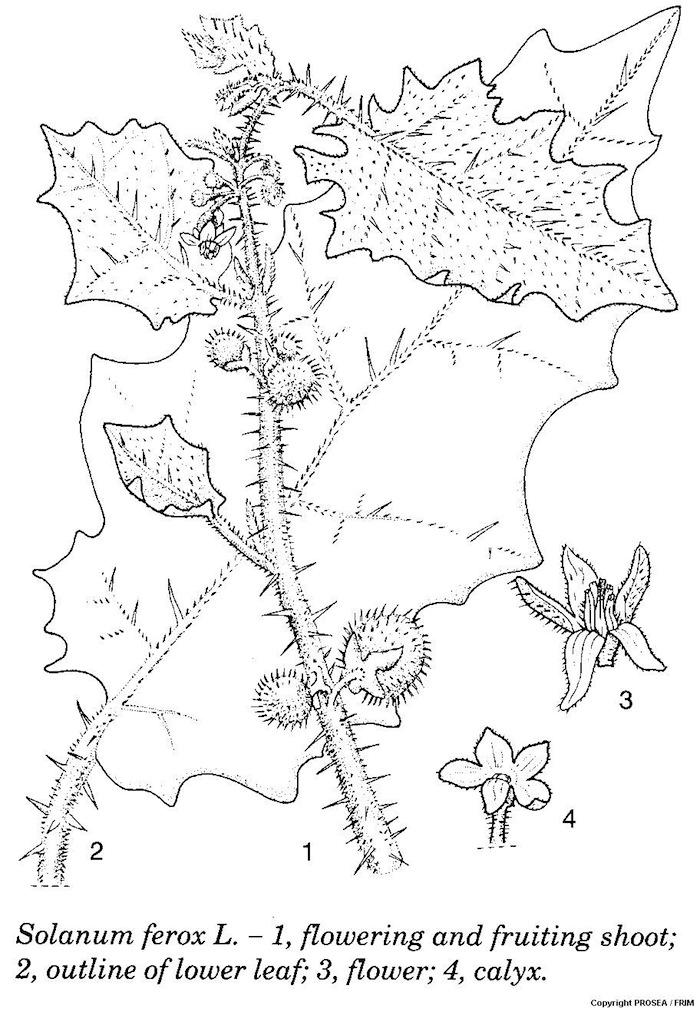Solanum ferox L.
Family
Solanaceae
Synonyms
Solanum indicum L., non auct., nomen ambiguum rejiciendum; Solanum lasiocarpum Dunal; Solanum stramonifolium auct., non Jacq.
Vernacular Names
|
Malaysia |
Terong iban, terong asam, terong dayak. |
|
Indonesia |
Terong asam, cung bulu (South Sumatra), terong perat (Madura). |
|
Papua New Guinea |
Su, su-lamas (Pala, New Ireland), kova-sakau (Lamekot, New Ireland). |
|
Philippines |
Tabanburo (Tagalog), bal-balusangi (Ilocano), tagatum (Bisaya). |
|
Myanmar |
Sinkade, tarabi. |
|
Laos |
Khüa khôn, khüa puux. |
|
Thailand |
Ma-uk (General), mapu (Northern), yangkhuidi (Karen). |
|
Vietnam |
C[af] bung. |
|
Brunei |
Tarong pasai. |
Geographical Distributions
The origin of Solanum ferox is unknown. It is distributed from India to New Guinea, including all Southeast Asian countries, and it occurs wild and cultivated. It is closely related to the South American S. candidum Lindley, but has never been reported from South America.
Description
Solanum ferox is a herb or small shrub that can grow up to 1(-2) m tall. It is densely stellately pubescent, and armed with straight sharp prickles or unarmed.
The leaves are broadly ovate, measuring 5-40 cm x 3-40 cm, markedly discolorous and shallowly pinnatilobed. The petiole is 5-16 cm long.
The inflorescence is up to 10-flowered. The pedicel is up to 2 cm long, and armed or unarmed with prickles. The sepal is broadly bell-shaped, envelops the fruit partly or completely, and armed or unarmed with prickles. The petal is star-shaped, white or purple.
The fruit is spherical, measures 1.5-3 cm in diametre, yellow, densely pubescent with long white stellate hairs and becoming hairless. The pale yellow seed is 2-2.5 mm long.
Ecology / Cultivation
Solanum ferox occurs wild in the Asian tropics in forest openings, on disturbed sites and in secondary thickets, often in shady sites, up to 1500 m altitude.
Line Drawing / Photograph
References
-
Plant Resources of South-East Asia No. 8: Vegetables.



